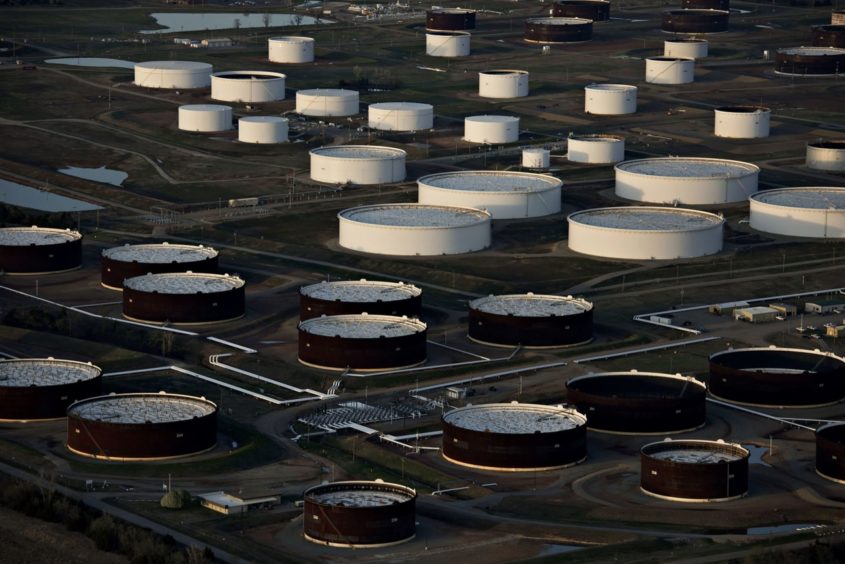
Oil markets rallied alongside a broader market rebound while rising tensions in the Russia-Ukraine conflict caused jitters in the market about potential supply disruptions.
Futures in New York rose as much as 2% with the global benchmark touching $90 a barrel for the first time in seven years on Wednesday. Inventories at the largest US oil hub fell 1.8 million barrels for the third week in a row. The oil market’s structure has surged in recent days, signaling tight supply.
Prices are also moving on mounting concern over a possible Russian incursion into Ukraine, with US President Joe Biden saying he’d consider sanctioning Vladimir Putin if the Russian leader orders an invasion. While a potential conflict carries large risks for financial markets – especially energy commodities such as natural gas and oil – Goldman Sachs’s base case is for no disruption to supplies.
Crude is having a volatile week, slumping Monday then rebounding Tuesday. Prices are at a seven-year high with demand continuing to recover from the pandemic as mobility picks up. A string of Wall Street banks including Goldman Sachs Group Inc. have forecast oil will hit $100 a barrel this year as the global market tightens.
“The market has basically been in persistent undersupply since mid-2020, thanks to OPEC+ cuts and a continued oil demand recovery,” said Helge Andre Martinsen, a senior oil analyst at DNB ASA. “We fully acknowledge that the world is not running out of oil resources, but we might enter an oil-market squeeze triggered by too little investment and oil demand rebounding quickly.”
Prices
- Brent for March settlement rose 2% to $89.97 a barrel at 10:50 a.m. in New York.
- West Texas Intermediate for March delivery advanced 2% to $87.30 a barrel.
Also in focus Wednesday is the Federal Reserve’s first policy-setting meeting of the year. Officials are expected to reaffirm their commitment to containing roaring inflation by ending stimulus and raising interest rates over 2022.
Chevron
Chevron raised its quarterly dividend 6% as the company attempts to share the benefits of rising oil prices with shareholders.
Chevron will pay $1.42 a share, up 8 cents from the previous payout, the California-based company said in a statement. The dividend is payable on March 10.
It’s the 35th consecutive year that Chevron has increased its dividend, making the company, along with rival Exxon Mobil, one of the S&P 500 Index’s few so-called Dividend Aristocrats.
Unlike their European peers BP and Shell, the American majors didn’t cut their payouts when oil prices plunged in 2020 due to Covid-19.
Recommended for you
